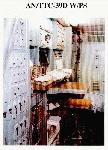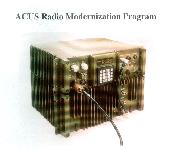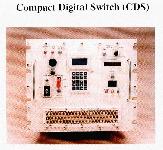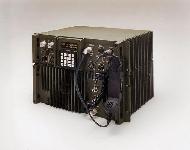Terrestrial transport systems are the backbone of the WIN architecture. They
provide simultaneous voice, data, imagery, and video communication services at all
levels of security. Terrestrial transport systems will provide higher capacity and
faster velocity by integrating Asynchronous Transfer Mode (ATM) protocols,
embedded Integrated Services Digital Network (ISDN) services, wideband
high-capacity radios, network services, and access to Personal Communications
Systems (PCS) cellular sites. Some of the network services provided will be
multimedia, wireless LAN, command post PCS cellular services, automatic dial-up
video teleconferencing, multi-level security, and ISDN ethernet gateway for remote
users.
ATM backbone and extension switches with ISDN technology, and
High-Capacity Line of Sight (HCLOS) radios will provide the velocity and
throughput necessary to support Force XXI information requirements. The HCLOS
will serve as the next-generation line-of-sight (LOS) radio for the Army�s
Tri-Service Tactical (TRI-TAC) and Mobile Subscriber Equipment (MSE).
Coupled with the other components of WIN, this will result in the complete overhaul
of the copper based, low bandwidth tactical telecommunication technology that has
previously existed.
The goal of the Terrestrial Transport WIN is to design an information systems
architecture using commercial technology. The objective Terrestrial Transport
System will emphasize forward compatibility and will support Force XXI well into
the 21st century. Warfighter Information Network Terrestrial (WIN-T) systems are divided into Band 1 (funded) and Band 2 (unfunded). Band 1 programs include: ACUS Switch Modernization Objectives, ACUS Radio Modernization Program, Battlefield VTC Program, RAU Range Extension, TI Manager and Training Device Upgrades. Band 2 programs include Wireless LANs, Fiber Optics, Secure Terminal Equipment, Personal Communications System and Airborne Repeaters.
The draft WIN-T Operational Requirements Document(ORD) dated 18 June 1999 [under Solicitation Number DAAB07-99-R-F401] changed the title from Warfighter Information Network - Terrestrial (WIN-T) System to Warfighter Information Network - Tactical (WIN-T). This reflected a holistic approach to documenting requirments by including network management and information assurance requirements together with the network infrastructure in one ORD. The draft ORD also addressed the requirement for a network solution that supports users at all classification levels.









